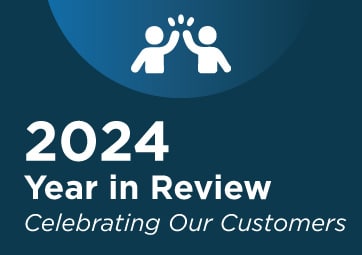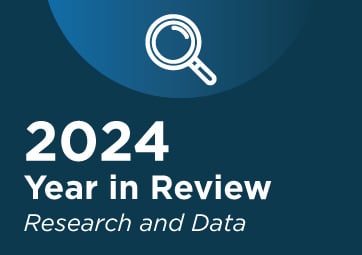On October 29, 2024, the U.S. Department of Homeland Security, the Fire Safety Research Institute, and the U.S. Fire Administration hosted an informational webinar, NERIS Version 1: Platform Launch and National Rollout, to provide updates and timelines for the National Emergency Response Information System (NERIS). Here’s a recap of the latest news to keep your team informed.
A new era in emergency response
NERIS, designed to replace NFIRS, has now completed its beta phase and is entering the first stage of rollout. With near real-time access to data, NERIS will offer valuable insights into emergency response across a range of scenarios, from fires to emerging threats.
The biggest update to emergency response in the past 50 years, NERIS’ importance cannot be overstated. It is a product of the hard work and dedication of industry members from around the country and is built by firefighters for firefighters. Once implemented, it will give your department unprecedented access to its data while reducing the burden of collection.
For a look back at NERIS developments leading up to this launch, see our previous blog update covering the beta phase and earlier milestones.
NERIS Version 1 Launch: Onboarding 100 selected departments
On November 4, 2024, NERIS Version 1 launched with more than 100 departments participating nationwide, representing a variety of department types across all 50 states. This milestone marks the transition from beta testing to operational use and establishes NERIS as a continually improving system built for the future.
Key features in NERIS Version 1
Version 1 is focused on addressing limitations in current systems. With the existing NFIRS system, limited data access makes it difficult to understand vulnerabilities and areas for improvement until it’s too late. NERIS is changing that by providing near real-time access to information, giving departments a fuller understanding of each response and delivering immediate feedback that can support improved training.
This access to data will also help departments paint a more data-driven picture for elected officials when requesting additional funds or resources. Departments will be able to better measure where their firefighters are making a difference–from risk-escalation to life-saving rescues.
Collectively, the insights gathered through NERIS are expected to help the fire service identify trends sooner, potentially preventing tragic outcomes. For example, NERIS would have identified the risks surrounding lithium batteries a lot quicker than the current NFIRS system.
Here are a few of the key features you can look forward to on the NERIS platform:
- Incident type without numeric codes: Good news, you’ll no longer need to remember codes. NERIS will now mention incidents by name alongside the option to add additional response types to accurately capture incident type and complexity. Tabs for tracking rescues, casualties, and injuries are also expected to provide a fuller picture of the impact of each response.
- Multiple memberships: NERIS is designed to allow personnel affiliated with multiple departments to access information for all associated departments in one place
- Better dashboard insights: The planned dashboard will include a recent incidents tab with a geo-spatial map that departments can filter, customize, and interact with.
- Geolocation services: This feature will map out individual responses, giving your departments a better understanding of response patterns and identifying areas where teams are primarily focused.
What’s the current timeline?
The roll-out will be taking place over the next few years. Here are few of the important upcoming milestones happening between the remainder of 2024 through 2026:
2024: Development and launch
This year has been incredibly productive. We’ve already seen the release of beta NERIS Core Data Schemas and data dictionary, prototype testing and evaluation, and the beta version launch. The latest step in the process was the NERIS v1.0 launch that happened on November 4, 2024, and it will be shortly followed by phase one of onboarding for fire departments nationwide.
2025: Hybrid reporting year
In 2025, there will be continued development through multiple software releases along with planning surrounding the decommissioning of NFIRS. Since it is a hybrid year, departments will begin the migration in phases. Because there’s no dual reporting, your team will need to decide when they’re ready and discuss with vendors.
Current goals for 2025 include:
- February: 500 additional departments onboarded
- Summer: 1,500 additional departments onboarded
- December: 5,000 additional departments onboarded
2026: Complete decommissioning of NFIRS
Starting January 1, 2026, all fire departments will fully transition to NERIS for incident reporting, and NFIRS will be decommissioned. Departments that haven’t completed onboarding by this date will finalize the process as NERIS becomes the national standard.
Preparing for NERIS
NERIS will be an incredible tool for departments, especially for presenting data-driven cases for funding and support. That being said, NERIS will only be as effective as its data, so it’s important to share the department information necessary.
To ensure a smooth transition, each department should appoint a data lead who is familiar with the department’s data and infrastructure. This person will manage onboarding, training, and ongoing system updates. If you haven’t already, begin training and orienting your crews with the available resources.
If your department currently uses an RMS for incident data collection, you can continue using it during the transition. The new system is compatible with current vendors, and if you use an NFIRS data entry tool, NERIS provides options to support that as well. For additional guidance, check out our FAQs About NERIS for answers to common questions about ESO’s integration and the transition process.
Finally, if there are any local departments around you that are not up to date with NERIS, share any and all resources and information you have to help get them started. This migration is a team effort.
How ESO can help with your transition
ESO is fully prepared to help with your migration to NERIS. From onboarding to data collection for reporting, our team is trained to ensure your transition is as seamless as possible. For more details about how we’re supporting this change, you can also read our FAQs About NERIS.
To access the most up-to-date resources, you can visit usfa.fema.gov/nfirs/neris/.
Catch up on all things NERIS and ESO! Check out our past NERIS updates in previous blogs posts and resources:


